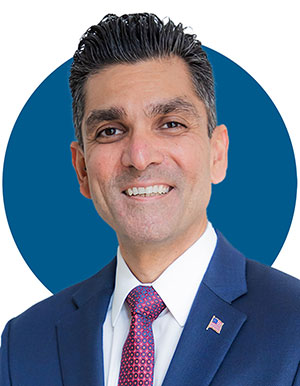Read time: 4 minutes
By: Prateek Bhatia
 The shift towards community-based care, driven in part by patient preferences and reimbursement mandates, has created a multi-billion-dollar private infusion services industry over the past several years. This move has put increasing pressure on health systems to adapt and innovate in order to retain patients and revenue alike. In this Q&A, Prateek Bhatia, BPharm, PhD, MBA, VPGM Intrafusion shares insights on the current considerations, challenges, and opportunities for infusion in health systems.
The shift towards community-based care, driven in part by patient preferences and reimbursement mandates, has created a multi-billion-dollar private infusion services industry over the past several years. This move has put increasing pressure on health systems to adapt and innovate in order to retain patients and revenue alike. In this Q&A, Prateek Bhatia, BPharm, PhD, MBA, VPGM Intrafusion shares insights on the current considerations, challenges, and opportunities for infusion in health systems.
MHS: What are the most notable trends in the infusion industry, and how are they impacting health systems specifically?
PB: One of the most compelling movements that continues to dominate the infusion sector is the shift towards community-based infusion care, specifically in privately owned Ambulatory Infusion Centers (AICs). Patients are increasingly opting for these settings due to cost savings and a more comfortable, convenient experience. This shift to a more “modern patient mindset” is putting pressure on health systems to adapt in order to recapture opportunities.
MHS: What do you see as the single biggest challenge facing health systems in the infusion services sector?
PB: Given the multitude of challenges health systems are currently facing surrounding infusion programs, it is difficult to define one as the single “biggest.” Still, I would venture to say that capacity and labor constraints may be among the most daunting. Health systems are often struggling with long wait times and poorer patient experiences compared to their AIC counterparts, which are driving patients to seek care elsewhere. Addressing these issues requires a multifaceted approach, including leveraging existing resources more effectively and investing in new technologies and partnerships to enhance operational efficiency.
MHS: Can health systems effectively compete with AICs?
PB: Unequivocally, the answer is yes – but it will take a deliberate and well-supported approach to do so. Generally speaking, health systems can compete to retain more of their current and potential infusion patient population by setting up their own community clinics and forming strategic partnerships with organizations like McKesson, who may already be their trusted distributor. These partnerships can provide the necessary expertise and resources to improve patient access and experience.
MHS: What are the most exciting opportunities you see in the infusion services market for health systems?
PB: For all the challenges health systems may be facing in the infusion sector, I always remind customers that it can be an equally exciting time when you explore the opportunities that exist. One key area is the potential to capture and retain more revenue by improving the patient experience and operational efficiency. By setting up community clinics and leveraging technology, health systems can attract and retain patients who might otherwise opt for AICs. Another opportunity is in data analytics, where health systems can use data to better understand patient needs and further enhance their ability to provide quality, seamless care.
MHS: What steps should health systems take to quantify potential revenue loss and identify solutions to improve their infusion centers?
PB: Health systems often don’t realize just how many opportunities are missed with an underutilized or underrealized infusion program. I encourage health systems who are interested in better understanding their infusion opportunities to start by conducting a thorough analysis of their current operations to identify areas of inefficiency and potential revenue loss. This can involve benchmarking against industry standards and gathering patient feedback. Once these areas are identified, health systems can explore solutions I’ve touched on, such as partnering with specialized organizations, investing in technology, and implementing best practices to enhance patient care and operational efficiency.
To learn more about how partnering with McKesson can help your health system recapture infusion volume, provide enhanced patient care, and achieve more for the business of pharmacy, contact us today.

Share
Post
Post
Email